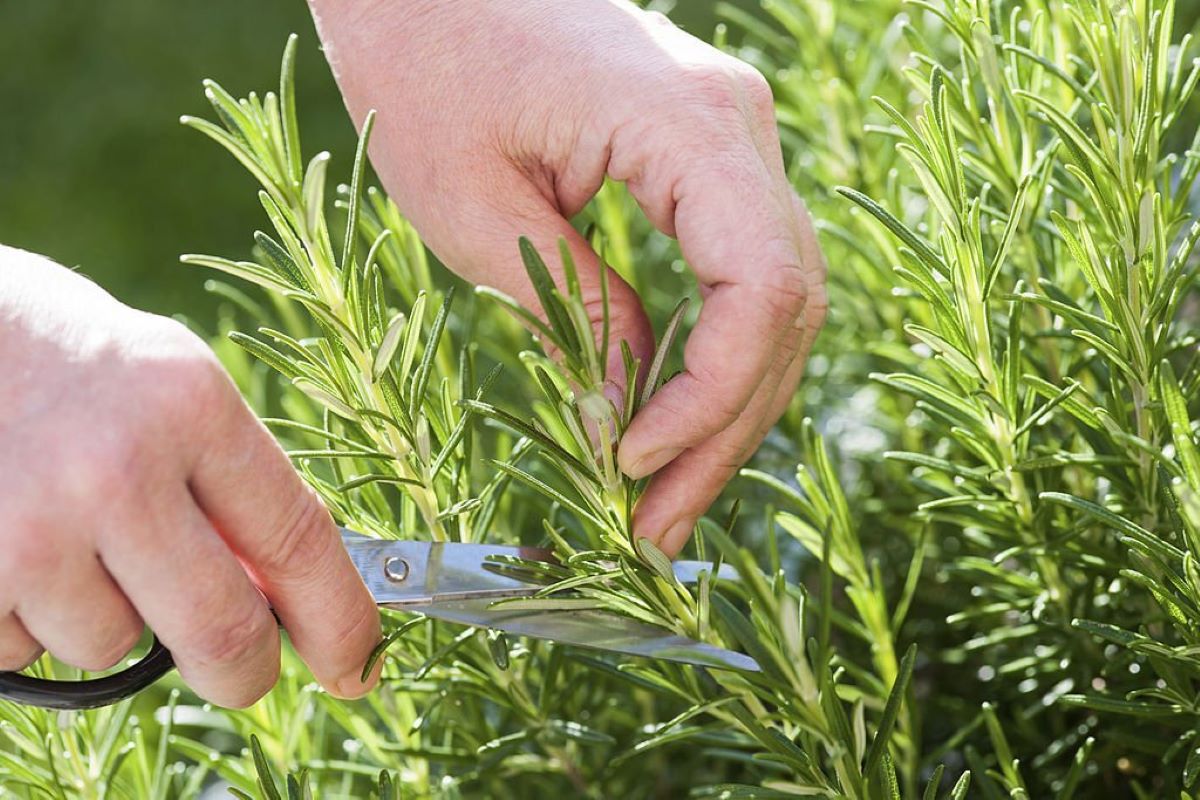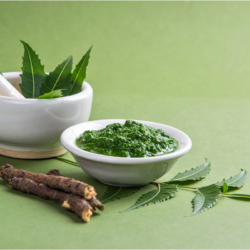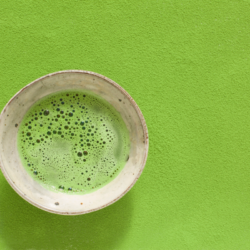Rosemary smells of Provence. In our imagination, it rubs shoulders with thyme and wild thyme. Undoubtedly, it evokes good herbs , and its use imposed itself first in food, for the pleasures of the nose and the palate, even before we realize that a meal decorated with rosemary not only tastes better, but also digests better. It is thus part of the Mediterranean way of life , and just like thyme, it symbolizes its values.
A little history
Cradle of Western civilization , the periphery of the beautiful blue is a place where life is good, despite human conflicts. While in the north of France, we put butter in the spinach, in the south, we put rosemary in our gratin, or on our barbecue. Moreover, science confirms the added value of this ancestral use ; the plant extract inhibits the formation of heterocyclic amines when cooking grilled meat at high temperatures. Not only does rosemary protect the cells of the esophagus and stomach against the negative effects of carbonized food proteins, but it also brings its fragrant scents, its eupeptic bitter taste, and puts the whole digestive system back in working order. These qualities alone justify planting a specimen of Rosmarinus officinalis in your garden, and then having an extract in your medicine cabinet.
Rosemary is therefore a heritage in itself. It is definitely a plant of the future; as evidenced by the proliferation of scientific studieswho are constantly discovering new properties, promising for the medicine of tomorrow. At the same time, it carries within it the history of southern peoples and civilizations. So many anecdotes and memories are attached to him, through the ages, since the dawn of time, which he cheerfully defies. Moreover, the pharaohs used it to embalm the mummies, allowing the carnal envelopes to face eternity, and who knows, the souls to continue their journey. You really need the “sailor’s rose” to sail on the boat of the beyond. However, it is surely more useful to the living, what the Greeks and Romans thought; who saw in particular in the beautiful labiée a symbol of love and prosperity.
What are the main pharmacological properties of Rosemary leaves and flowering tops?
Hepatic properties of rosemary:
-
Hepatoprotection:
This effect of rosemary is notably linked to the presence of carnosic acid, carnosol and rosmarinic acid. The hepatoprotective action of the first two of these compounds would pass in part by their ability to maintain and increase the enzymatic activity of glutathione peroxidase (GPx) and superoxide dismutase (SOD), the activity of which is reduced in the presence of a toxic.
In vitro , rosemary extract indeed exerts an antilipoperoxidant and antihepatotoxic activity . In vivo , rosemary reduces acute carbon tetrachloride-induced hepatotoxicity, and partially prevents inflammation, necrosis, and vascularization, by acting as an antioxidant and enhancing detoxification systems, dependent on glutathione-S -transferase (GST). This activity is linked to carnosol, which normalizes plasma bilirubin, reduces hepatic malondialdehyde (MDA) content, lowers plasma alanine-aminotransferase (ALAT=TGP) activity by 50%, and partially prevents hair loss. glycogen and parenchymal lesions in the liver.
-
Hepatic detoxification:
In vitro , carnosic acid as well as carnosol are phase II enzyme activators. Additionally, rosmarinic acid is able to activate both phase I enzymes (CYP) and phase II enzymes (glutathione S-transferase and UDP-glucuronosyltransferase).
Digestive properties of rosemary:
-
Choleretic and cholagogue:
The use of rosemary is traditionally recognized for its choleretic as well as cholagogue activities .
-
Gastroprotectors:
The hydroalcoholic extract of rosemary exerts anti-ulcer activity in vivo in models of gastric ulcers induced by indomethacin, ethanol and reserpine.
Antioxidant and cytoprotective properties of rosemary:
Rosmarinic acid exerts an antioxidant effect by inhibiting the production of nitric oxide (=nitric oxide = NO), as well as that of reactive molecules of oxygen and nitrogen. Thus, in cultured macrophages, rosmarinic acid prevents major damage caused by oxidative stress or cell aging. This compound inhibits lipid peroxidation at cell membranes.
In total, the antioxidant activity of the plant was also shown for its phenolic diterpenes (carnosic acid and carnosol and 12-O-methylcarnosic acid) and its flavones.
A 2019 research work was able to demonstrate in particular that the use of the powerful antioxidant profile of the polyphenols of rosemary extracts, associated with a cryogenic environment using dry ice, makes it possible to reduce the peroxidation of lipids, and to maintain a greater capacity to conserve the water of products of the surimi type enriched with omega-3 fatty acid, during their storage, resulting in better physicochemical stability of these products over time.
These phenolic diterpenes have shown in vitro and in vivo the ability to inhibit prostate cancer, by targeting several signaling pathways involved in cell cycle modulation and apoptosis. Ethanol extract of rosemary exerts antiproliferative effects on human leukemia and breast carcinoma cells , related to its antioxidant properties . Other in vitro studies have shown the ability of rosemary extracts to inhibit the growth of ovarian, colon and melanoma cancer cells.
Immune and anti-infective properties:
In vitro , rosemary reduces the production of leukotriene B4 in human polymorphonuclear cells and inhibits complement. Rosemary leaf extract additionally exhibits anti- Helicobacter pylori and antifungal ( Aspergillus ) activity, even at low concentrations.
Anti-inflammatory properties:
Rosemary extract is able to inhibit the formation of peroxynitrites and nitrites on cells treated with lipopolysaccharide (LPS) or interferon gamma (IFN y) by inhibiting the expression of inducible NO synthase (iNoS) . This effect would therefore be due to the prior inhibition of the nuclear factor kappa B (NF-kB) pathway, involved in the immune response and in the response to cellular stress, and to the blockade of mitogen-activated protein kinases (MAP -K), enzymes involved in a number of cell life events, such as mitosis, differentiation, apoptosis, or cell survival. These results ultimately indicate that rosemary would be able to induce an advantageous mechanism in cell protection and the resolution of inflammation.
Metabolic and cardioprotective properties:
-
Antidiabetic:
In vitro , rosemary leaf exerts an inhibitory effect on protein glycation in diabetics . R. officinalis extract also exerts hypoglycemic and hepatoprotective activity . A rosemary extract used in children with type 1 diabetes, in combination with omega 3 and vitamin E, resulted in an improvement in their metabolic profile.
-
Hypolipidemic:
Carnosol, rosmanol and epirosmanol inhibit lipid peroxidation as well as the oxidation of blood LDL cholesterol. A 2016 literature review clarifies the pharmacological mechanisms of rosemary in the management of metabolic syndrome, as documented in in vitro and in vivo studies . It details in particular the significant antioxidant, anti-inflammatory, hypoglycemic, hypotensive, anti-atherosclerotic, antithrombotic, hepatoprotective and hypocholesterolemic effects of the plant.
-
Vasculoprotector:
In humans, the plant extract also improves arterial circulation in young healthy volunteers.
Other properties:
- Diuretic
- Hypo-allergenic
- Nephroprotection
- Neuroprotective
Are there any precautions for use concerning Rosemary?
Contraindications:
- According to the EMA, the use of rosemary (leaves, flowering tops and essential oil) is not recommended for pregnant and breastfeeding women, as well as for children under 12, except for food use.
- According to the EMA, rosemary baths are not recommended for local use in the event of open wounds, extensive skin lesions, acute dermatosis, severe infection, significant circulatory disorders and heart failure.
Side effects :
- Cases of asthma and contact dermatitis have been reported with rosemary or its extracts. During local use, it is advisable in subjects with sensitive skin, to carry out a preliminary test on a restricted area before making wider use.
Precautions for use:
- Ensure medical follow-up in the event of gallstones and hepatobiliary pathology.
How to take Rosemary and at what dosage?
Liquid form:
- Standardized fresh plant fluid extract : 5 ml 2 to 3 times a day in water.
- Infusion : At the rate of 2 to 3 g of rosemary leaves for 150 ml of boiling water, for 10 min, 1 cup 2 to 3 times a day.
Medical bibliographic sources and clinical trials :
-
Wijeratne S.S. et al., Potential of car rosemary (Rosemarinus officinalis L.) diterpenes in preventing lipid hydroperoxide-mediated oxidative stress in Caco-2 cells; J. Agric. Food Chem., 2007
-
Kim D. et al. Inhibitory effects of rosmarinic acid on adriamycininduced apoptosis in H9c2 car diac muscle; cells by inhibiting reactive oxygen species and the activations of c-Jun N-terminal kinase and extracellular signal-regulated kinase; Biochem. Pharmacol. Car., 2005
-
Qiao S. et al., Rosmarinic acid inhibits the formation of reactive oxygen and nitrogen species in RAW064.7 macrophages, Free Radic. Res., 2005
-
Sroka Z. et al., Antiradical and anti-H2O2 properties of polyphenolic com- pounds from an aqueous peppermint extract, Z. Naturforsh. Car., 2005
-
Chan M.M et al., Effects of three dietary phytochemicals from tea, rosemary and turmeric on inflammation-induced nitrite production; Cancer Lett., 1995
-
Tsai P.J. et al., Evaluation of NO-suppressing activity of several Mediterranean culinary spices, Foood Chem. Toxicol, 2007
-
Ai-sereiti M.R. et al., Pharmacology of rosemary (Rosmarinus officinalis Linn.) and its therapeutic car potentials; Indian Journal of Experimental Biology, 1999
-
Schwarz K. et al., Anti-inflammatory and anti-allergic effect of rosmarinic acid (RA); inhibition of seasonal allergic rhinoconjunctivists (SAR) and its mechanism, Biofactors, 2004
-
Del Bano M.J. et al. Phenolic diterpenes, flavones, and rosmarinic acid distribution car during the development of leaves, flowers, stems, and roots of Rosmarinus officinalis; Antioxidant activity, J Agric Food Chem., 2003
-
Cheung S. et al., Antiproliferative and antioxidant properties of car. rosemary Rosmarinus officinalis, Oncol Rep., 2007
-
Kim H.Y. et al., Protein glycation inhibitory and antioxidative activities of some plant extracts in vitro; J Agric Food Chem., 2003
-
Zeng H.H. et al., Antioxidant proprerties of phenolic diterpenes from Rosmarinus officinalis, Acta Pharmacol Sin., 2001
-
Dias P.C. et al., Antiulcerogenic activity of crude hydroalcoholic extract of Rosmarinus officinalis L., J Ethnopharmacol., 2000
-
Mahady G.B. et al. In vitro susceptibility of Helicobacter pylori to bocanical extracts used traditionally for the treatment of gastrointestinal car disorders; Phytother Res., 2005







